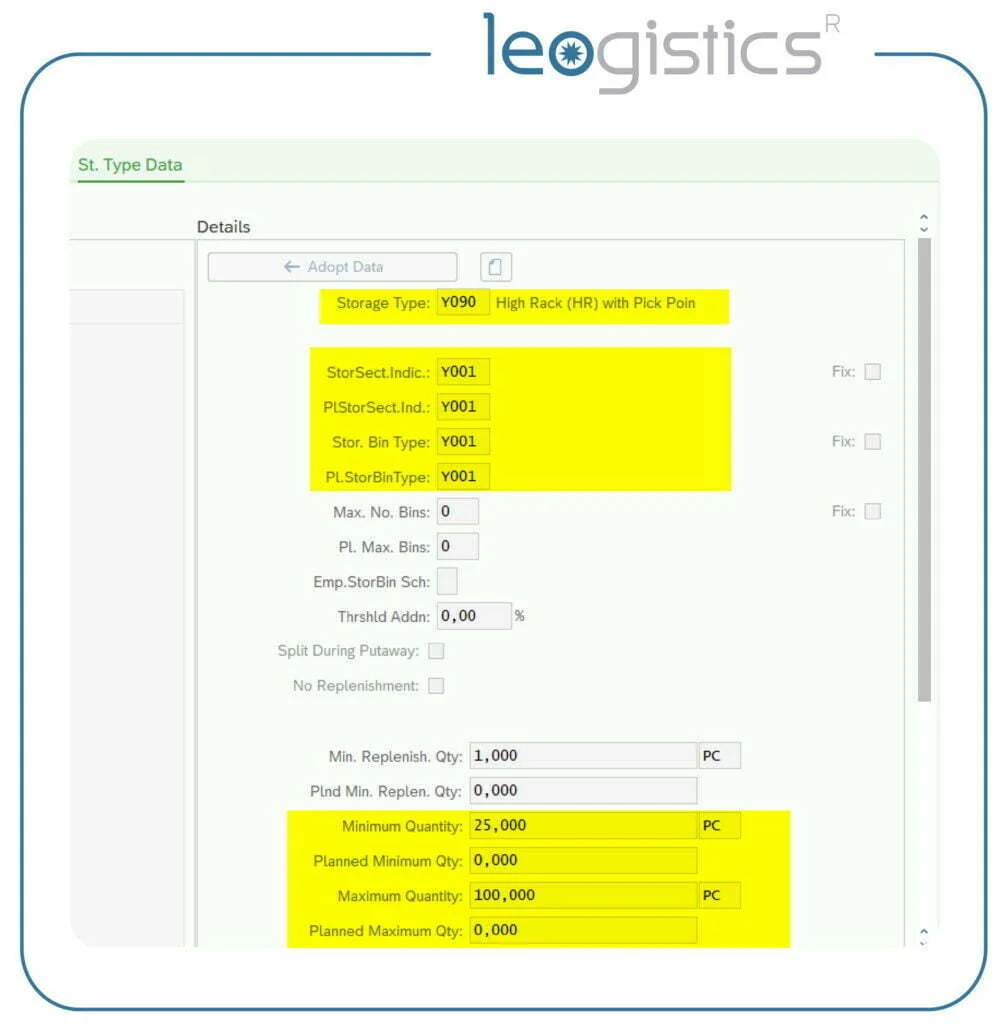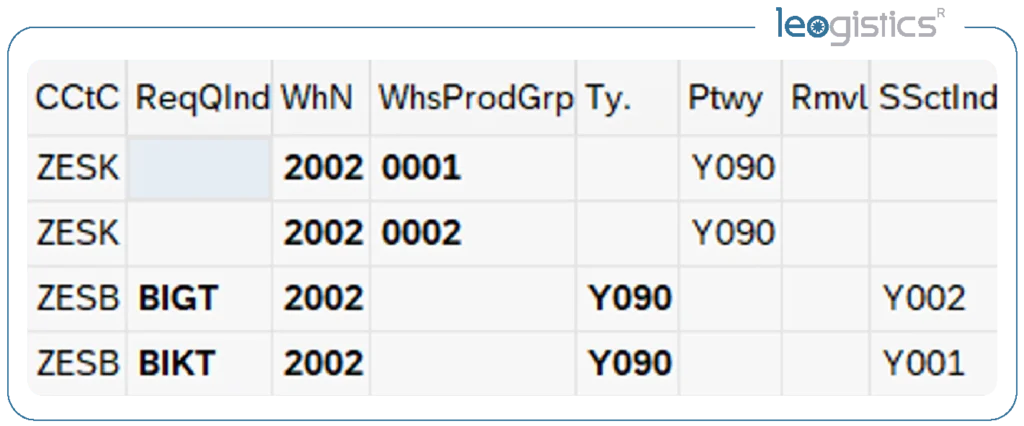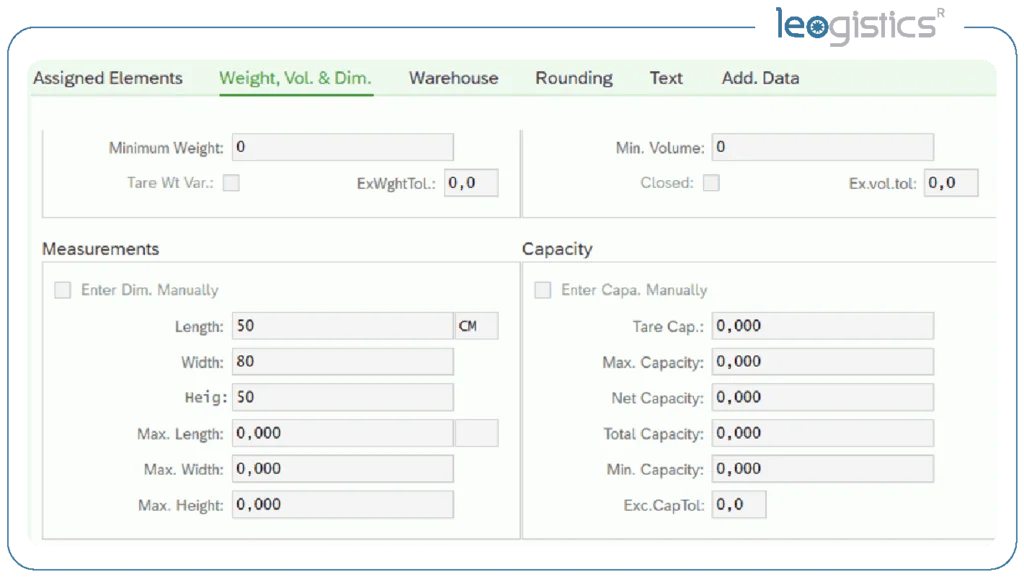A topic that still does not receive much attention from customers is storage disposition in SAP EWM, better known as “slotting”. Often the interaction between storage disposition and warehouse reorganization is relevant as well. The storage disposition can be understood as a part of the master data concept. With its help the optimal material master data for the storage of a product can be determined on the basis of certain criteria. Thus, the putaway strategy in EWM is also influenced by various master data. In order that the optimal material master data can also be determined, further master data and customizing entries must be cultivated for the determination. The condition technique can be used for the determination.
Parameter storage disposition
The following parameters, which are updated in the product master, are influenced during storage disposition:
- Putaway or stock removal indicator
- Storage section indicator
- Storage bin types in storage type
- Maximum/minimum quantity per storage type
While step one is always executed by the EWM, steps two, three and four can be optional. Steps one to three are determined using condition technique. This can be used to filter certain results based on parameters such as length or color. In step three, you can alternatively maintain customizing entries for determination, which in turn are determined at the storage type level. In practice, the focus for putaway should be on the first three indicators.

How to Define Important Factors for Storage Disposition
In addition to the four indicators mentioned above, there is a separate area in /SCWM/MAT1 for storage disposition. In this area, further influencing factors can be defined, which in the end can be used for the determination of the three mentioned criteria.
The requirement quantity, the sales order position and the recommended storage position are dimensionless values at first, which can be interpreted freely for itself, but used for the deduction of the requirement indicators. The requirements indicators are derived from the quantities in the material master (requirements quantity, sales order quantity and recommended stock quantity) and the intervals defined in customizing. Once a requirements indicator has been determined, it can in turn be used to determine the indicators required for putaway (e.g. storage section indicators) using the condition technique. The quantities to be specified can be maintained manually in the material master or imported via interface. This can be done via the standard APO interface or an external system.
Another way to determine the three most important putaway indicators is to determine the dimension indicators. In the material master, the values must be maintained in the basic data so that they can be matched with the intervals from customizing. If the data is determined correctly, the indicators for each dimension indicator are updated in the material master. The indicators can then be used to determine the three putaway indicators using the condition technique.
This is How the Storage Scheduling or Slotting Process is Executed
Slotting is carried out using transaction /SCWM/SLOT and is determined from a combination of customizing and master data. The result is the optimal values for the putaway control indicator, storage section indicator and storage bin type indicator. We do not consider the maximum storage quantity in this article.
For an example scenario, let’s take the following warehouse data in the material master /SCWM/MAT1:
- Putaway control: YQ05 – Product for bulk storage B
- Storage section indicator: 0003
- Storage bin type: YPR 1 – High rack bin with bin section
Beforehand, the PPF condition records for the CON application (storage disposition) were defined using transaction /SCWM/DLVPPFC. Separate condition types were created for the determination.
For the determination of the correct putaway control indicator it was defined that the warehouse product groups 0001/0002, which were maintained in the product master, receive the putaway control indicator Y090.
The storage section indicator is determined using the required quantity indicator. The required quantity has been stored in the product master and the corresponding intervals for quantity reconciliation have been stored in customizing. For example, if the BIGT indicator is determined, the product receives the storage section indicator Y002.

Storage bin type determination: How SAP EWM determines bin types


Determination of the optimal master data for all three indicators.
After the customizing and the master data have been coordinated, the determination of the optimal master data for all three indicators can begin via the /SCWM/SLOT. First, it must be determined which factors should be used for the determination of the indicators.
The following would be relevant:

Two-Step System in SAP EWM
After carrying out the storage disposition, you will receive a detailed protocol for the determination of the three indicators. If the determination was successful, then the values must be transferred to the product master. SAP EWM offers a two-step system for the transfer.
First, the values can be transferred as “planned value”. Then, the planned values can be transferred as actual values. After the update is done, the indicators for the future putaways are taken into account in the putaway strategy. It is also possible to freeze the values so that an update by the /SCWM/SLOT is blocked.
With the updating of the master data, you have now created the basis for the putaway strategy and thus also the basis for the warehouse reorganization. We will introduce the warehouse reorganization to you in another blog article.
We are here for You!
We do not encounter Slotting very often at our customers. On the one hand, this may be due to the fact that Slotting is only available with an additional license (part of the Advanced function) within the scope of Embedded EWM. On the other hand, Slotting initially seems daunting to many customers because of its complexity. But it is worthwhile to take a closer look at the topic! When dealing with storage disposition, it is also possible to introduce only partial areas at first and thus keep the complexity within limits. In combination with warehouse reorganization, storage disposition can be a good asset for the organization of one’s warehouse. Do you have any questions? Contact us at blog@leogistics.com.
Daniel Rotter
Senior Consultant SAP Logistics
Optimizing Warehouse Logistics with AI and Data Analytics
Why Digitization and AI Will Determine the Success of Warehouse Logistics in the Future
The Warehouse as a Valuable Part of the Supply Chain
Goodbye to Scanning – How ABAP Push Channels (APC) Can Improve Warehouse Performance
What distinguishes successful consulting in warehouse logistics
#futureoflogistics: leogistics Points the Way to the Future of Logistics
Why warehouse management should set up now for digitalization
Optimize Warehouse Activities with Wave Management
Avoidable pitfalls in production integration in SAP EWM
BLOG &
NEWS
Latest news and blog posts from the world of intelligent supply chain management.













